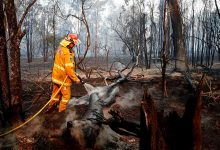The new Integrated System Plan produced by the Australian Energy Market Operator is at once the successor to the RIT (regulatory investment test), and a symbolic map.
The most important point to understand about the ISP is its legal status. Here we can do no better than quote from the press release.
“The Energy Security Board (ESB) is finalising a detailed policy design and regulatory framework to facilitate the execution of the actionable ISP with a view to implementing the revised framework by June 2020. PAGE 3 OF 3
The intention of an actionable ISP is to streamline and simplify the RIT-T and post RIT-T regulatory approvals.
The role of RIT-T moving forward will be reduced to looking in detail at engineering aspects, refine costs, consider alternate non-network options, and staging.”
The ISP will legally drive transmission, but only hypothesize about generation
Without a carbon reduction objective, all of the ISP modelling is built on assumptions about future generation. In some ways that’s why so many scenarios are required.
In addition there are assumptions built into the ISP like Queensland’s 50% renewable energy target that many participants would still feel cautious about.
The thinking underlying the ISP misses at least one key foundation
Decarbonisation of electricity in Australia involves 4 key pieces and each one takes longer than the next.
A: Building wind and solar to supply bulk energy. 90% of the fuss is about wind and solar (VRE). That’s the easiest and fastest bit of the job;
B: Building sufficient low carbon dispatchable/firming balancing power. Physically, this takes longer and the market structures required are tougher. Demand response and efficiency fit in here.
C: Building the transmission. This is, of course, where the most policy progress is happening, but desperately needed projects are still stuck in the AER RIT process being assessed by bureaucrats who in the end are not in a position to really add value.
D: The control systems. A high VRE grid with high DER is going to have low physical inertia. ARENA, AEMO and Australia’s power engineering community appear to have fallen far behind in keeping up with the rapidly developing use of power electronics to control system strength, manage voltage, fault current and reactive power in the new order.
As far as I can tell, and despite the fantastic background of many people in the ISP planning process, I can’t see anything in the ISP that takes an appropriate view of the massive changes in control systems required in Australia’s transmission and distribution.
This applies right down to everyone’s household system. AEMC’s “power of choice” system has resulted in a lower penetration of communicating meters than there should be, just for starters.
There is a lot of work with long lead times required here, perhaps even more than in transmission and yet if it isn’t done the whole transition is at risk.
The transmission system at a glance

No project has yet fully emerged from the RIT process and subsequent AER review. In short transmission timing is still a risk for Victoria and NSW even if that risk is diminishing.
There is still literally thousands of megawatts of generation in Tasmania and NSW that won’t get into Victoria if big coal generators fail in that State in the March quarter. Medium term though its NSW that remains most at risk.

About REZ – Winners and losers
In our view the ISP is quite pessimistic about renewable energy zones. For instance, it says that the New England, NSW zone where there are just 300MW of exist spare capacity isn’t needed until 2036. That’s not going to comfort developers such as Walcha Energy.
This list of winners and losers can be extended but focusssing on the winners.











